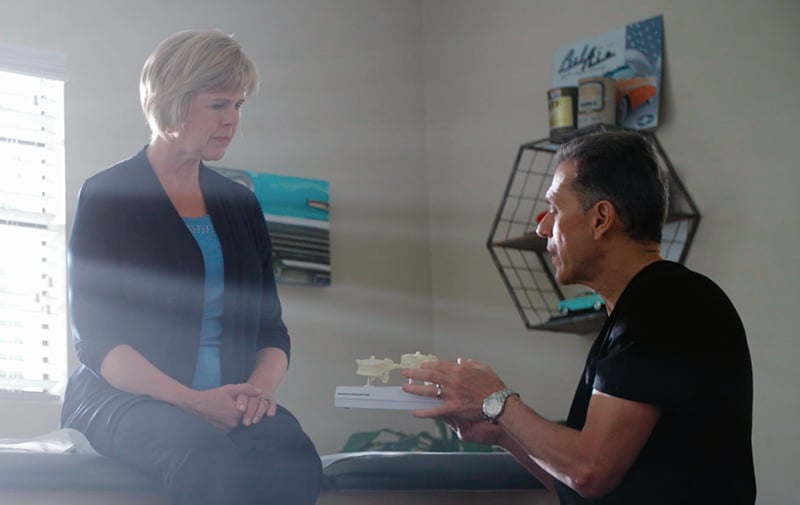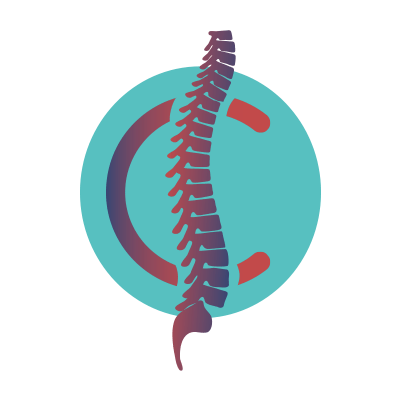Scoliosis and Deformity Treatment
Citrus Spine Institute specializes in the diagnosis and treatment of scoliosis and spinal deformities. Learn how scoliosis and deformity treatment can help improve your comfort and quality of life.

What Is Scoliosis and Deformity Treatment?
Spinal deformities are caused by an abnormal alignment of the vertebral bodies in the spine and can be caused by scoliosis, degenerative changes, and congenital or traumatic injury. As a result of spinal deformities, you may experience lower back pain and lower extremity pain. Scoliosis and other spine deformities can be corrected through a routine of physical therapy, medication, braces, and other non-invasive methods. For more pronounced deformities, corrective spine surgery may be required to realign the spinal column. At Citrus Spine Institute, we specialize in both approaches.
Learn More About Scoliosis and Deformity
There are several signs you may need scoliosis or spinal deformity treatment.
In regards to scoliosis, the symptoms you may experience are as follows:
- Uneven shoulders or waist
- One hip is higher than the other
- One side of your rib cage is jutting forward
- Prominence on one side of your back when bending forward
Regarding other spinal deformities, the symptoms can differ depending on the particular deformity you have. There are many different spinal deformities, including scoliosis, kyphosis, lordosis, flatback syndrome, ankylosing spondylitis, and spondylolisthesis. While the causes of these spine deformities can all be different, the signs you may have a deformity are similar. With that in mind, there are general symptoms for spine deformity that should serve as a notice that you need to visit your doctor. These symptoms include:
- Neck, back, or leg pain,
- Radiating pain that shoots into the arms, hands, legs, or feet
- Uneven hips, shoulders, or leg lengths
- A hump in the upper back or bulging out from one side of the rib cage
- Loss of the natural arch of the upper or lower back
- Chin to chest syndrome or forward jutting of the head
- Unsteadiness while walking
- Herniated discs, pinched nerves, or spinal cord compression
- Heart, lung, or bladder complications
If you have one or more of these symptoms or other serious back pain symptoms, schedule an appointment with a spinal specialist to examine them.
Spinal deformities are treated in several different ways, and your treatment will depend on the severity of your symptoms, how many vertebrae are affected, and the type of deformity. For less severe cases, your healthcare provider may suggest a minimally invasive treatment, such as physical therapy, epidural steroid injections, facet injections, braces, and chiropractic modalities. However, in particularly severe cases, these treatments may not be sufficient and you may require surgery, such as a spinal fusion, to correct the spinal deformity.
During a spinal fusion, your surgeon will alleviate the pressure causing the pain by decompressing the nerves in the spine. The nerves are decompressed by creating interbody space in the spine, restoring their disc height, and correcting their alignment. Afterward, your surgeon will use rods and screws to keep your spine in place. The fusion process (where your bones fuse together as they heal) doesn’t occur during the procedure, but instead, happens during the healing process.
After spinal surgery, you will have some restrictions to ensure proper healing and fusion. It's common to feel pain, stiffness, and soreness after any type of surgery, however, these feelings will fade as you heal. Often, the patient will begin moving two days after the surgery; however, the typical hospital stay can last from four to seven days. Following this procedure, most patients will have to wear a lumbar spine brace for three months, and some may require a bone growth stimulator to promote the healing process.
Furthermore, we advise that you avoid going back to school or doing sedentary desk jobs until two to four weeks have passed. During this recovery period, your healthcare provider may prescribe antibiotics, over-the-counter medicines, and pain medications to reduce the risk of infection and help with pain management. Additionally, post-procedure patients should refrain from strenuous physical activities, including lifting, pushing, pulling, bending forward or backward, as well as driving and sitting for extended periods of time. Normal activities can resume for most patients around six to 12 months after the surgery is complete. Be sure to follow all instructions provided by your healthcare provider and attend all follow-up appointments and physical therapy sessions to ensure optimal recovery.
As with almost any surgery, there is some level of risk involved. Specific to scoliosis and spinal deformity surgery, risks include pseudoarthrosis, where the vertebrae don’t fuse together post-surgery, and in rare instances, paraplegia. Because of the severity of this complication, surgeons take extra precautions to manage this risk such as monitoring brain activity, reading signals from the patient's muscles, and (very rarely) temporarily waking the patients during the surgery and asking them to move their feet.
Other potential risks of a spinal deformity correction include infection, cerebrospinal fluid leak, blood loss, nerve damage, and instrumentation failure. Your healthcare provider will discuss all risks associated with spinal deformity and scoliosis treatment before your procedure, as they will have more insight into the likelihood of complications based on your unique medical history and health status.
Spinal deformity and scoliosis surgery have varying rates of long-term complications. Your healthcare provider will discuss more details about the possible successes and risks of the procedure during your consultation.

The Citrus Spine Difference
For us, the patient remains the king, in everything that we do.
01
02
03
04
We're affiliated with the North American Spine Society, staying up to date on advances in spinal health.
What To Know Before Scoliosis and Deformity Surgery
Before any spinal procedure, there are things you should do to ensure you’re adequately prepared for it. We recommend that patients have and maintain optimal body weight. You will also want to properly prepare your home to make life during recovery easier and reduce the risk of injury. Discuss with your doctor the best ways to prepare for your procedure in the coming weeks leading up to the surgery, follow their instructions, and let them know of any changes that may happen beforehand.
Wondering If Scoliosis and Deformity Treatment Is Right for You?
The first step to finding out if scoliosis and spinal deformity surgery is right for you is to consult with a specialist. A knowledgeable, experienced orthopedic spine surgeon can help you find the right solution for your unique condition. Schedule a consultation today to see if scoliosis and spinal deformity treatment is what you need to find relief.



